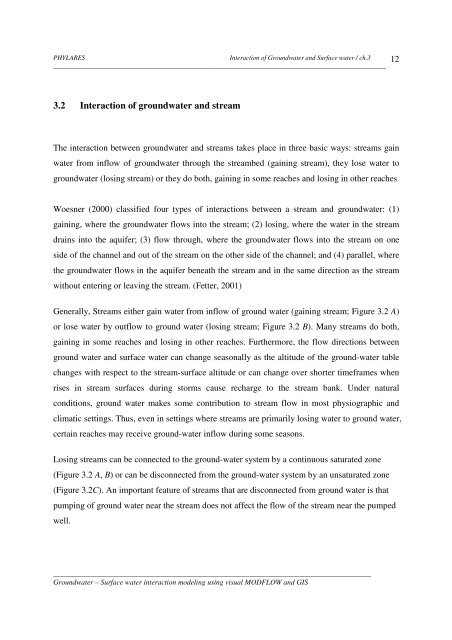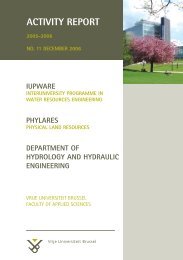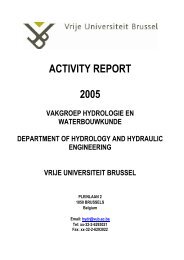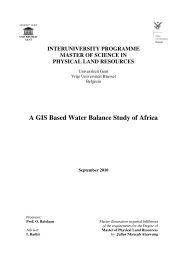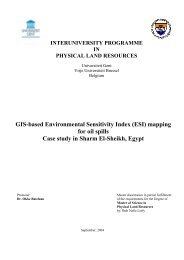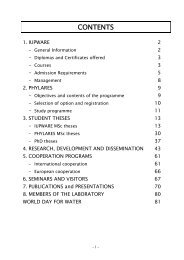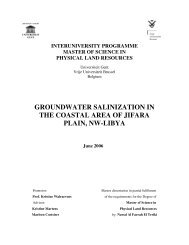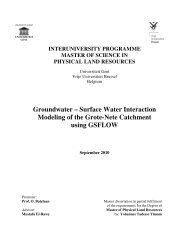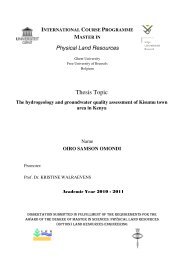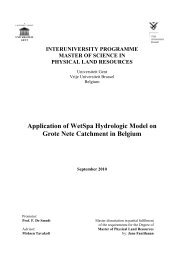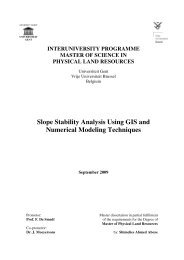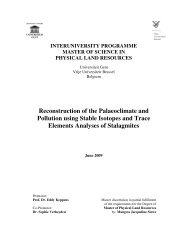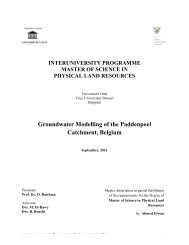Surface Water Interaction Modelling Using Visual MODFLOW and GIS
Surface Water Interaction Modelling Using Visual MODFLOW and GIS
Surface Water Interaction Modelling Using Visual MODFLOW and GIS
- No tags were found...
You also want an ePaper? Increase the reach of your titles
YUMPU automatically turns print PDFs into web optimized ePapers that Google loves.
PHYLARES<strong>Interaction</strong> of Groundwater <strong>and</strong> <strong>Surface</strong> water / ch.3__________________________________________________________________________________________123.2 <strong>Interaction</strong> of groundwater <strong>and</strong> streamThe interaction between groundwater <strong>and</strong> streams takes place in three basic ways: streams gainwater from inflow of groundwater through the streambed (gaining stream), they lose water togroundwater (losing stream) or they do both, gaining in some reaches <strong>and</strong> losing in other reachesWoesner (2000) classified four types of interactions between a stream <strong>and</strong> groundwater: (1)gaining, where the groundwater flows into the stream; (2) losing, where the water in the streamdrains into the aquifer; (3) flow through, where the groundwater flows into the stream on oneside of the channel <strong>and</strong> out of the stream on the other side of the channel; <strong>and</strong> (4) parallel, wherethe groundwater flows in the aquifer beneath the stream <strong>and</strong> in the same direction as the streamwithout entering or leaving the stream. (Fetter, 2001)Generally, Streams either gain water from inflow of ground water (gaining stream; Figure 3.2 A)or lose water by outflow to ground water (losing stream; Figure 3.2 B). Many streams do both,gaining in some reaches <strong>and</strong> losing in other reaches. Furthermore, the flow directions betweenground water <strong>and</strong> surface water can change seasonally as the altitude of the ground-water tablechanges with respect to the stream-surface altitude or can change over shorter timeframes whenrises in stream surfaces during storms cause recharge to the stream bank. Under naturalconditions, ground water makes some contribution to stream flow in most physiographic <strong>and</strong>climatic settings. Thus, even in settings where streams are primarily losing water to ground water,certain reaches may receive ground-water inflow during some seasons.Losing streams can be connected to the ground-water system by a continuous saturated zone(Figure 3.2 A, B) or can be disconnected from the ground-water system by an unsaturated zone(Figure 3.2C). An important feature of streams that are disconnected from ground water is thatpumping of ground water near the stream does not affect the flow of the stream near the pumpedwell.______________________________________________________________________________________Groundwater – <strong>Surface</strong> water interaction modeling using visual <strong>MODFLOW</strong> <strong>and</strong> <strong>GIS</strong>


